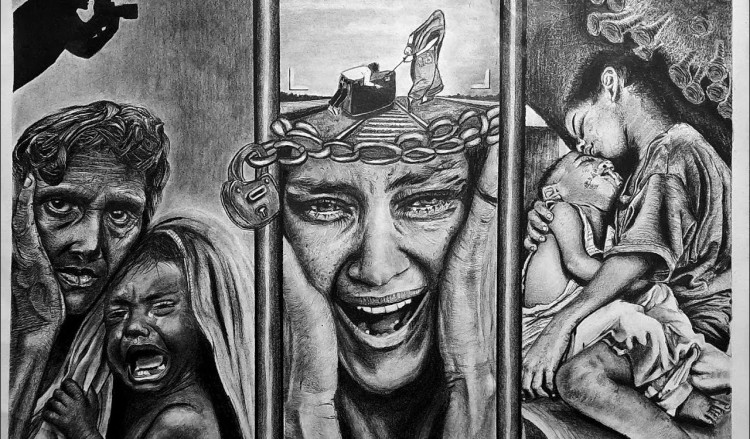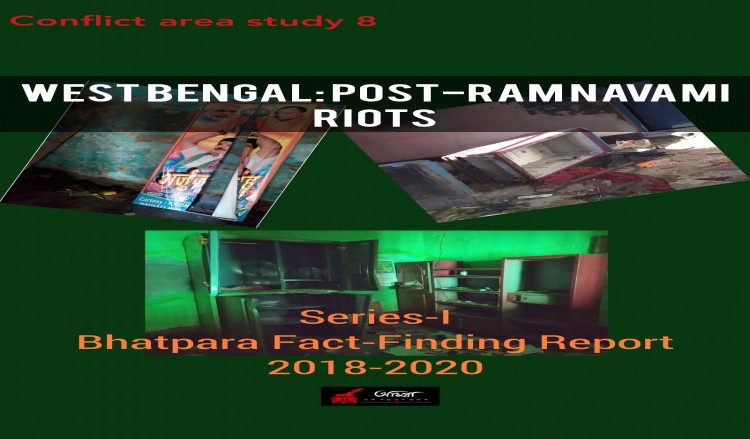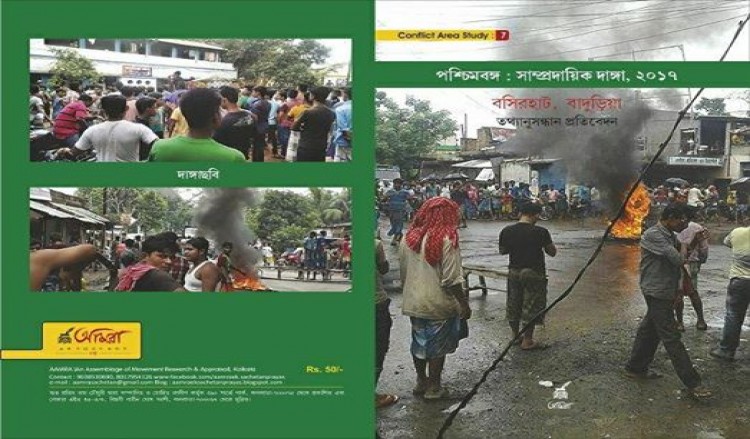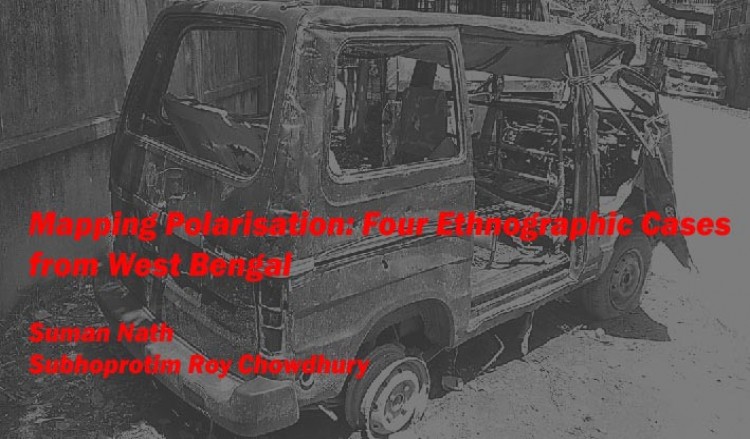
Mapping Polarisation: Four Ethnographic Cases from West Bengal
Religious polarisation is on the rise in India especially after the Bharatiya Janata Party led National Democratic Alliance assumed power of the center in 2014. West Bengal with instances of numerous riots during the partition of the country has a history of peasant uprise followed by party-mediate public transactions for more than three decades. With party becoming the major mediating mechanism the state presents a picture of being relatively immune to riots and primordial identity issues. However, of late, there has been a significant rise in the number of riots and identity polarisation. We have studied four major cases of religious polarisation and riots since 2015 to reflect on how identity issues are propagated through a mix of invented traditions, hoax and use of dubious means like employing goons and in what ways riots pay electoral dividends to the political parties.
Article details:
2019, “Mapping Polarisation: Four Ethnographic Cases from West Bengal”. Journal of Indian Anthropological Society, Volume 54, pp. 51-65. ISSN: 0019-4387
Download PDF
Authors:
Suman Nath
Assistant Professor in Anthropology
Dr. A. P. J. Abdul Kalam Govt. College
Rajarhat, New Town, Kolkata - 700156
sumananthro1@gmail.com
Subhoprotim Roy Chowdhury
Researcher
An Assemblage of Movement Research &Appraisal (AAMRA)
Kolkata
Introduction
West Bengal, one of the 29 States of India, has seen identity-based polarisation in 1930s and religious riots during the partition of the country in 1947 (Bose 1986; Das 1991). Different scholars have studied them as clashes between traditionalists and fundamentalists within Islam, as a social class conflict, and as an outcome of economic inequalities increasingly taking an organised form (Das 1991). However, radical leftist movements known as Naxalite movements in 1970s pushed religious identity issues at the backseat (Pal 2017). With repeated failures of state governments and presidential interventions, finally in 1977 Communist Party of India Marxist (CPIM)- led Left Front (LF) assumed power to rule the State for more than three decades. In the year 2011, Trinamool Congress (TMC) in alliance with Indian National Congress (INC) dislodged them. TMC then came out of the alliance and continued to rule the state till now. During their tenure, it was LF who promoted party based political mediation in public affairs. It suppressed other competing channels of public transactions including those linked with primordial identity issues. Such mediation is termed as ‘Party Society’ (a modified version of Chatterjee 2004 by Bhattacharyya 2009, 2016) and systemic misrecognition where people were made to recognise party as an alternative and accessible form of government for all practical purposes (Nath 2018). Das (2005) tries to show post Babri Mosque demolition-led Calcutta riots in 1992 as symptoms of the subsurface continuation of Hindu-Muslim fissure. In a much recent ethnographic work, Roy (2014) reports continuation of such a trend in everyday life of the people in West Bengal. Chatterjee (2017) reports construction of geographical, social and mental boundaries between the Hindus and Muslims in Kolkata – the capital city of the State of West Bengal.
LF’s defeat in 2011 has led to a steady disappearance of the party society with gradual disintegration of LF organisations. TMC in its second term in 2016 consolidates their support base even in places which used to be considered as the LF bastions (Nath 2017). Two years before that, in 2014 there was another major shift in the national politics when the INC led secular democratic United Progressive Alliance suffered defeat in the hands of Bharatiya Janata Party (BJP)-led National Democratic Alliance. Mr. Narendra Modi became the Prime Minister of India from Varanasi – the holy city of the Hindus, in preference to his home ground of Gujarat. It was symbolic of the eventual rise of pro-Hindu politics in India. Policies like beef ban, incidents like lynching of Muslims and murder of dissenting voices are symptoms to the beginning of a non-secular India (see also Guha 2016). Although West Bengal remained immune to religious riots for nearly three decades, the State also began to show a significant rise of identity polarisation and occurrence of riots (Figure 1). These have intensified further since October 2016 (Purakayastha 2018).
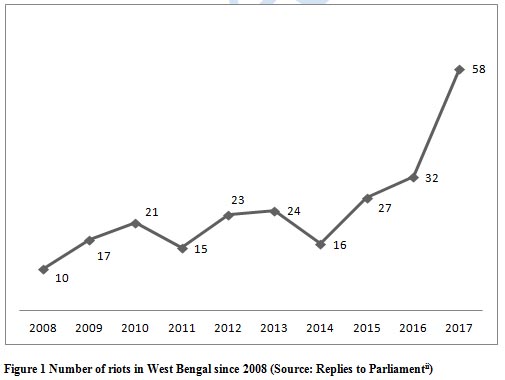
Policy context of the political change shows TMC thrusts on two major areas: (a) the farming sector and (b) the cultural sector. Both the farming sector, dealing with the principal occupation of the people and the Ministry of Information and Cultural Affairs (MICA) looking after fairs, festivals and the like experienced roughly 6 times increase in fund allotment. In terms of hike, MICA occupies the second position after farming (GoWB 2017, Nath 2018). Furthermore, the state is also providing a monthly honourarium to the Imams and Muezzins which is often seen as instances of Muslim appeasement. In 2018, TMC for the first time promoted Ram Navami rallies, which have been initiated originally by the BJP affiliated pro-Hindu organisations (ToI 2018). The State has also given a grant of Rs. 10,000/- to Rs. 28,000/ to Durgotsav organisers (India Today 2018). Such initiatives are seen as TMC’s desperation to maintain a balance in appeasing both Hindus and Muslims to ensure electoral support. Placing these initiatives in context of resurgence of riots would signal an alarm as it signifies recalling people’s dreadful experiences and historians’ perceptions that with such riots communalization in India could have been even worse (Guha 2016). Needless to say, these initiatives in West Bengal have the potential to question the secular foundation of the country. We argue that these political and policy initiatives require through unbiased academic attention. It is important to contextualise them with the recent resurgence of identity polarisation. While scholars try to see promotion of identity polarisation through cleavage formation over time (Laitin and Posner 2001; Thapar 2014), that has close linkage with instrumental violence for electoral gains (Brass 2005, Pai 2013, Wilkinson 2004), there is a significant lack of understanding of how such constructs are manufactured at local and micro levels. For constructivists, it is the content of social category and construction of boundary rules between ethnic groups that consolidate categories. Such consolidations result in strengthening of organisational base (Fearon and Laitin 2000, Brass 2005). Most of the studies along this line focus on stereotyping identity construction and riot affected existence (Banerjee 2008; Robinson 2005; Gupta 2011; Gayer and Jaffrelot 2012). However, the process of identity consolidation and the mechanism of creating riots are fairly understudied (Chatterjee 2017). Nath (2018) theorises on the use of cultural apparatus as ‘cultural misrecognition’ – the mechanism of diverting people’s attention from the issues of service delivery to primordial identity issues. Such a theorisation is quite apt to explain the political inclination on identity issues in West Bengal at the expense of issues of delivery of public services. Apart from Berti, Jaoul and Kanungo’s (2011) compilation on ethnographies of Hindutva as cultural and artistic expressions, charismatic personification and narratives of resistance, there is a virtual absence of academic inquiries dealing with the ways identity consolidation takes place through riot-like incidents. Based on such an ethnographic research, this article is an attempt to map apparently chaotic but subtly planned development of identity politics in West Bengal. We have studied four major conflicts in West Bengal since 2015 to identify some of the core dimensions of manufacturing such forms of violence. The justification for studying riots in West Bengal is twofold (a) the State has seen virtual absence of riots and identity based political mobilisation for more than three decades, hence, studying them would help scholars to theorise and throw light on the ways in which such polarisations are promoted afresh; (b) because of its contemporary nature, the study of these issues reveal contemporary mechanisms of promotion of identity polarisation especially through hoax and post-truths. In this paper we have made an attempt to unravel some of the structural mechanisms and major dimensions of such a resurgence through ethnographic case studies.
Methodological considerations
Our ethnography centres on the core issue of resurgence of riots and hence transcends ‘local’ boundaries in the ‘classic’ sense of ethnography. It can be called as an example of ‘multi-sited ethnography’, which is “a response to empirical changes in the world and therefore to transformed locations of cultural production” (Marcus 1995: 97). Although the idea of ‘total immersion’ in the field context continues to dominate much of the ethnographies, it often becomes difficult to practice in multi-sited ethnographies (Marcus 2007). Anthropologists sometimes are not in a position to do immersion based ethnography on issues of violent conflict, such as riots (Wood 2006). For this reason, it was impossible for us to explore the dimensions of ‘agency’, linked to the riots in West Bengal. We have rather explored the nature of events as they have unfolded themselves by making repeated visits to the riot-affected regions and holding conversations with different actors. We have interviewed eyewitnesses, riot affected people, local influential personalities, political leaders and workers and persons in local administration. In each of the cases we have made an immediate visit after the riot, mostly within a week at places where entry was permissible. We could visit places bound by administrative restrictions only when such restrictions were lifted. We repeated such visits usually in every fortnight until the impact of riot slowly faded and something new happened in some other places. For Kaliachak, Dhulagarh, Naihati-Hajinagar, Baduria-Basirhat we have made five, twelve, eight and thirteen such visits respectively. Interviews and group discussions were conducted in both formal sessions and informal discussions to explore the constructs and stereotypes associated with the polarised public sphere and map the mechanisms of polarisation in a State which has rather been immune to such identity based mobilisation of public sphere for more than three decades.
TMC’s politics and primordial identities:
With few exceptions like the then transport minister Lt. Subhas Chakrabarti, LF leaders could maintain some distance from the religious festivals. TMC, on the other hand, has a history of promoting and patronising Durgotsav, the most important festival of Kolkata. Different club organisations including most, if not all, of the best prize winners in organising the festival have TMC leaders and ministers as their honourary presidents and patrons. The Chief Minister herself inaugurates several Durgotsav every year, which has prompted Daniyal (2017) to brand Durgotsav as a government festival. While giving honourarium to the Imams and Muezzins was projected as TMC’s Muslim appeasement programme, patronising ‘Durgotsav’ through funding, organising carnivals and giving awards are only expected. Not only do TMC’s Hindu leaders participate in Iftar wearing Muslim stereotypical dresses, its Muslim leaders also patronise ‘Durgotsav’. Festival centred politics has become one of the important political mechanisms for TMC (Sircar 2017, Nath 2018). One can see it as a successful model of politics of control through cultural alignments termed as ‘cultural misrecognition’ by Nath (2018), which is working parallel to service delivery driven policies like ‘Saboojsathi’, subsidised food grain distribution and United Nations award winning ‘Kanyashree’ scheme. TMC’s interface with identity issues apparently promotes Sarva Dharma Samabhava with no discrimination based on faith (Madan 2010). However, because of lack of conceptual clarity associated with ‘Sarva Dharma Samabhaba’ these acts are easily interpreted as community-based appeasement policies (see Bhargava 2010). Although Sircar (2017) argues TMC is careful of not to be branded as a party which patronises one religion over others, several post-truth[i] hoaxes systematically identify TMC consciously following a policy of Muslim appeasement
The four cases studied
The broader stereotypic perception about TMC as a Muslim appeaser has several localised connotations. Much of what appears as Hindu-Muslim polarisation in recent past and the resultant riots can be seen as differential manifestations of (a) an organised movement towards creating polarisation and (b) attempts to mobilize against TMC and its alleged Muslim appeasement policy. We present below four cases to map the nature of polarisation and the background mechanisms of riots in recent times in West Bengal.
Case I: The attack on Kaliachak police station, Maldah on January 03, 2016 made the stereotype of Muslim terror an ‘established fact’ in common perception in West Bengal. With wide media attention Kaliachak became a household name to represent Muslim atrocities on Hindus. It was one of the first incidents that made Hindu-Muslim discourse back to the discursive sphere of West Bengal. Because of television footage and Muslim majority in Maldah district of West Bengal, the attack was seen as an outcome of communal violence and a fight between Hindus and Muslims.[ii] During the study we talked to the local people residing adjacent to the police station. Two issues came to the fore. First, two distinct groups of Muslims came on 3rd January to visit the police station. The first group was that of a Muslim organisation of repute, namely, Anjuman Ahle Sunnatul Jamat (ASJ). ASJ was carrying all necessary permission to protest. They staged a protest against the alleged derogatory remarks made by Amalesh Tewari, a leader of Hindu Mahasabha – a pro-Hindu organisation attached with Viswa Hindu Parishad (VHP). Inclusion of women and children in the protest movement indicates that they had no intention to spread violence. A second group of Muslim men suddenly came within an hour. They started vandalising the police station by hurling crude bombs and firing bullets from country made pistols. Vehicles including several State Government-run Busses were set ablaze. In a group discussion with some of the police officials we were told that local goons attempted to destroy police records against some of the notorious criminals. While ASJ happens to be one of the major Muslim organisations in the region having considerable influence on local Muslims through religious hegemonic apparatuses, another organisation Idara-e-Saria (IS) is also marking their presence felt in the region. Some of the local Muslims reflected that the violence was an outcome of the conflict between the two competing organisations to gain control over the local Muslims. ASJ’s popularity and strategy to launch protests against Amalesh Tewari was perceived as a threat to the IS as they could not launch similar protests on time. It was an attempt on their part to hijack the show. The protest turned violent because of the involvement of local goons. Through our repeated group discussions with a variety of people it was amply clear that the Kaliachak violence didn’t have any communal intention. While media reported it as a political clash (Chakravarty 2016), several videos and images were circulated through social media with a provocative footnote from Hindu Jagaran Manch – another pro-Hindu wing of VHP. One of the messages claimed that with the help of TMC, Muslims were turning West Bengal into a ‘Pakistan’, which clearly indicated at the process of Islamisation of the State through terror. Handbills were distributed in different places of Maldah carrying the same message. Consequently, Kaliachak could successfully be communalised in popular perception of a large section of the people in West Bengal.
Case II: Dhulagarh, Howrah saw a local conflict between Hindu and Muslim youths over share of extortion money took a communal turn. It lasted for weeks in December 2016 and January 2017. At Dhulagarh there is a stark economic inequality between Muslim Jari manufacturing unit owners and others. These owners over the years have acquired considerable wealth and they employ local Muslims and Hindus as labours. A form of ghettoisation of both Hindus and Muslims has started operating in the area which shows clear geographical and corresponding social divide. Despite being economically dependent on each other, these neighbourhoods follow mutual avoidance in terms of identity demarcation and ‘cultural’ practices. “It is not that we don’t go to their festivals like Eid-ul-Zuha, but only a few amongst us are interested in making friendship with them; their Islamic Jalsa always says nasty things about us. Admittedly, they are more religious minded and we are not!” – one of the local youths confessed (in personal interview in February 2017). Our group discussions among the villagers of Munshirhaat, one of the epicentres of violence in January 2017, held a week after the curfew was lifted could reveal the extent of mistrust, shame and fear between the two communities. One of the villagers in a personal interview in January 2017 reflected “we are ashamed of what had happened, we don’t know how we are going to show our faces to Hindu brothers... it is the outsiders who looted, vandalised and set fire to properties...” In several group discussions and informal conversations we could find out that the conflict originated from the share of money extorted from a property transfer. Allegedly, Muslim youths already took money from a Marwari merchant who bought a land from one of the local Bengalispeaking Hindu families. With such information on extortion money, members of a local club run by the Hindu youths felt deprived. The club itself is located just by the side where the property is in existence and both Hindus and Muslims use that place as the playground. “We play separately within the land and there was never any conflict between us. They wear their traditional lungi while playing and we don’t find it comfortable to play matches with them” (as one of the club members told in March 2017). On the day of Milad-ul-Nabi celebration, local Muslims decked the region with Islamic flags. Someone put a flag near the Hindu club and the rumour spread that the Hindus had torn down the flag. Immediately fights between the two broke out. Several houses in Hindu localities were set ablaze; shops and Jari manufacturing units were looted.
“Astonishingly, while the rumour spread at around 10:00 am the violence started within 30 mins. Within an hour houses were completely burned down, shops were looted. Perpetrators hid their faces. I am sure they were all outsiders… it was a planned attack – one of the old Muslim women recollected in a group discussion in March 2017. With several injuries, even after deployment of Rapid Action Force the region continues to remain disturbed.
Case III: The third case study is from Naihati-Hajinagar of North 24 Parganas district. Actually, here our research on the mechanism of identity consolidation started years before the conflict took place in 2016. We have seen the development of pro-Hindu group organising stick fight practice sessions, physical training camps and Ganga Aarati since 2012. The organisational move through these activities is meant to make Hindutva an everyday feature among the practitioners. As we come from that region, we can tell with certainty that these rituals are recent imports and are examples of what is theorised as ‘invented traditions’ (Hobsbawm and Ranger 1983). Similarly, widespread inventions Ram Navami rallies represent the flagship of aggressive Hindutva and violence. In Naihati-Hajinagar the tension continued to rise as Hindus and Muslims in their Ram Navami and Muharram rallies displayed arms to intimidate each other. These are clear indications of religion-party interface. People argue that local Members of Legislative Assembly (MLAs) of Hajinagar and Naihati assembly constituencies regularly attend religious programmes organised by the two communities. On 15th August 2016, a Muslim youth allegedly tore down Indian National Flag in the evening and was beaten up by the Hindus at a place known as Karbala crossing. As a fall out, communal tension at different places near Karbala crossing grew, but before it could take an ugly turn the situation was managed by the timely police intervention. Such prompt reactions by the communities indicated existing Hindu-Muslim divide. Communal conflict at a much wider scale happened with State’s notification of stopping Durga idol immersion processions on the day of Muharram in October 2016. Such a notification was projected as an example of Muslim appeasement. Following the notification, there was an increase in the intensity of identity consolidation. One could see Muharram rallies becoming larger and more intensive. On the next day to Muharram, allegedly someone from the Durgotsav idol immersion procession nearby threw a stone aiming at one of the local Mazars. Immediately a Hindu Muslim fight started. Several local shops were looted. Witnesses to the event reported that there were outsiders who actually started destroying and looting the shops. Soon a series of incidents followed signifying revenge and counter revenge by the two communities. One of the Muslim shop keepers in February 2017 reflected:
“It was not needed for our CM to become “Mumtaz Begam.” Muslims are already supporting her. Had there been arrests of hooligans there would not have been any conflict between Hindus and Muslims relating to their processions... We know people who work both for the TMC in the daytime and Rashtriya Swayamsevak Sangh (RSS- the largest Hindu organisation) in the night.”
Mamata Banerjee, the TMC supremo and Chief Minister of the State has been called ‘Mumtaz Begum’ meaning thereby that she is a Muslim appeaser. It is one of the popular connotations being promoted lately. Within a few weeks of the conflict a couple of peacekeeping rallies were convened by the two MLAs of the region. These rallies could only further consolidate the process of polarisation between Muslims and the other by the Hindus.
Case IV: The Baduria-Basirhat violence from the same district within a few months indicates continuation of cleavage. It is arguably the second longest duration of ethnic violence in recent past in West Bengal, the first one being the Asansol-Ranigunj riot centring on Ram Navami in March-April 2018. It started on July 2, 2017 because a derogatory Facebook post on Prophet Muhammad and Kaaba Sharif by a boy studying in his plus two standard. It was shared by many and eventually became ‘viral’ online. The boy was arrested. However, the tension continued to spread in vast areas of the district of North 24 Parganas for weeks amidst a series of violence and counter-violence. Being an orphan, the boy used to stay with his uncle’s family. On 2nd July a group of Muslims vandalised his uncle’s house. Their neighbours belonging to both Hindu and Muslim communities tried to protect the house. They failed as the group mainly composed of outsiders armed with iron rods. On 3rd July there were several large-scale organised moves by Hindus and Muslims against each other at different locations in and around the twin towns of Baduria-Basirhat. It resulted in destruction of several houses belonging to both Hindus and Muslims. Two important centres of conflict were that of Tyantra and Tentulia, the two adjacent villages of Hindus and Muslims respectively. A middle-aged Hindu gentleman Mr. Kartik Mondal was killed by the rioters in Tentulia which further aggravated the violent situation. Even the Rapid Action Force had to recede. A tear-shell hit one of the local Muslims who were taken to the hospital by Kartik Mondal’s son in the same ambulance in which he took his dying father. It remains as an example of Hindu-Muslim solidarity. In several interviews in September and October 2017 Kartik Mondal’s son continued to repeat that “such violence between the two communities are unprecedented… a major cleavage of mistrust is now solidified.” In a group discussion in November 2017 one of the villagers argued, “because religious training supported by TMC and BJP are on the rise, the youngsters are becoming violence prone … the outsiders can only launch an attack when there is some involvement from within the community.” While Basirhat town has a Hindu majority, many of its adjacent regions have pockets of Muslim concentration. Conflict between these two communities continued for weeks together. People belonging to both the communities reflected that while there were outsiders involved in promotion of riots, known faces were also involved in each of the organised attacks.
Following is a broad comparison of the core issues from the four cases we have just discussed:
|
Issues |
Kaliachak |
Dhulagarh |
Naihati-Hajinagar |
Baduria-Basirhat |
|
Organisation base |
Organised use of goons. Competition between two similar organisations |
Hindu and Muslim organised move, and use of goons |
Pro-Hindu organisations |
Organised. Revenge and counter revenge among the ghettoised neighbourhoods |
|
Nature of event |
Pre-decided date opportunism |
Festival and procession linked |
Festival procession linked |
Facebook post |
|
Mechanism of spread |
Media and Social media |
Social media |
Social media |
Hoax and social media |
|
Stereotyping |
Muslim terror |
Muslim terror |
Muslim appeasement by state |
Muslim appeasement by state |
|
Cultural cognitive institutional dimensions |
Hindu minority & identity under threat |
Hindu-Muslim fissure, mistrust. |
Perceived threat and participation in communal organisations |
Prominent mistrust. |
Table 1 Core issues from the five cases (source: field data collected by authors)
As West Bengal has been passing through a series of religious conflicts in recent past, an analysis of some of the recent election results shows rise of BJP in the State (Figure 2).
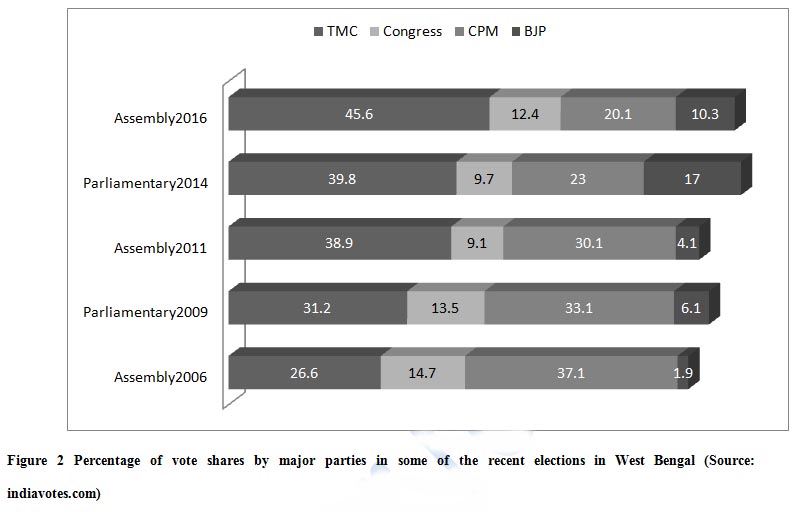
Figure 2 shows that although there is a fall in the percentage of voting for BJP in assembly election in comparison to the last Parliamentary election there is a substantive rise of BJP’s popularity. The Panchayat votes in 2018 makes BJP the nearest opposition to the TMC. It is clear that there is a substantive fall of left forces who during their tenure did successfully control the identity issues in politics. There seems to be a clear association with figure 1 and 2 in terms of identity based mobilisation and an associated rise BJP and perhaps TMC as well (as also noted by Pai 2013).
Conclusions:
West Bengal is experiencing an increasingly organised form of identity based political mobilisations which is both ontologically and epistemologically different from LF promoted party society. Four important dimensions of subtler mechanisms of identity politics are coming out of this paper, first, the organisational aspect of identity mobilisations; second, the stereotyping of ethnic groups especially the Muslims; third, invented traditions and misrecognitions in action; and, fourth the uses of hoax and post-truth as a political strategy. Each of these issues requires further elaboration. Still the issues are ample enough reasons to think that recent riots in West Bengal are not the direct outcome of ‘natural’ incompatibilities between the two communities. In each of the conflicts, organised outsiders, most often backed by known hooligans, played a crucial role. It indicates the existence of hooligans to be used by forces which have strong organisational base in the State. While there are already existing organisations fuelling such conflicts, people’s experiences of violence make them seek shelter under the canopy of those organisations functioning along the line of religious identity. Consequently, it is only a matter of time for the common people to join one or the other forms of identity based organisations. In fact, more recent aggressive riots in Ranigunj-Asansol of Paschim Bardhaman district in 2018 suggest further consolidation of identity politics. Clearly, the construction of stereotypes surrounding religious identities is quite in progress in West Bengal. Such constructs frequently link violence with Muslims citing examples from global Muslim organisations like Islamic State and erstwhile Al-Qaida and Taliban militants. Several organisations like Hindu Jagaran Manch are systematically using and projecting such Muslim stereotypes as Islamic State militants executing innocents simply because they were not willing to side with them. Furthermore, religious festivals including Islamic Jalsa, Ram Navami rallies, Ganga Aarati are no less important in identity consolidation through invention of traditions. As the ground for religious consolidation is prepared with identity being perceived through invented traditions, riots are held with the purpose of creating organised hatred, mistrust and permanent cleavage. Meanwhile, BJP with a pro-Hindu image has been making concerted efforts to ensure electoral gains in West Bengal. In the process, it contributes to identity-backed politics by following its own course of creating symbols or markers of polarisation.
Such identity consolidation and related political practices are making a comeback once again in smaller but significant forms in West Bengal. The comeback must not be seen as a simple resurgence of primordial sentiments linked to any particular political party like TMC with its public image as a Muslim appeaser or BJP basking on its pro-Hindu stance and self-imposed glorification of Hindu tradition. It is rather a complicated process, linked with grassroots politics, policy preference and increasing religiosity of the country at large. West Bengal is passing through a process of strategic utilisation of misunderstood policies and practices to fuel polarisation. While there is a prominent role of hoax and post-truth narratives spread through social media, political goons are used in fermenting violence and counter violence. Such incidents then enter into the loops of discursive sphere and take an automated form of further consolidation of identities and continuation of violence. It results in creating a disturbed present to be referred to in near future suitably mixed with even more hoax and rumours.
There is fuzziness in the Indian form of secularism, as the concept of Sarva Dharma Samabhava (treating each religious as equal) is discussed by scholars like Bhargava (2010), Madan (2010), Thapar, Noorani and Menon (2016). Our study shows the manner in which policy and practices associated with supposedly Sarva Dharma Samabhava approach are misrepresented (perhaps misrecognised too) and then misused in distorted forms by communal forces to expand their support base by taking recourse to post-truth hoax. The whole approach may be a deliberate play for narrow, immediate gains at West Bengal, therefore, is now at a crucial juncture when it is experiencing the increasing prospect of shrinking of space for the truly secular and democratic forces to operate in the political arena.
References
Banerjee, Mukulika [Eds.] 2008. Muslim Portraits: Everyday Lives in India. New Delhi, Yoda
Berti, Daniela. Pralay Kanungo and Nicolas Jaoul [Eds.] 2011. Cultural Entrenchment of Hindutva: Local Mediations and Forms of Convergence. New Delhi, Routledge
Bhargava, Rajeev 2010. The Distinctiveness of Indian Secularism. In: Indian Political Thought: A Reader, ed. by Akash Singh and Silika Mohapatra, pp. 99 – 119. London, Routledge.
Bhattacharyya, Dwaipayan. 2009. Of Control and Factions: The Changing ‘Party-Society’ in Rural West Bengal. Economic and Political Weekly. 44: 59-69.
Bhattacharyya, Dwaipayan 2016. Government as Practice: Democratic Left in a Transforming India. Delhi, Cambridge University Press.
Bose, Sugata 1986. Agrarian Bengal: Economy, Social Structure and Politics. 1919- 1947. Cambridge, Cambridge University Press
Brass, Paul, R 2005. The Production of Hindu-Muslim Violence in Contemporary India. Seattle, University of Washington Press.
Chakravarty, Ipsita 2016. Why did the Media Ignore the Malda Communal Violence? https://scroll.in/article/801459/it-was-localised-violence-in-a-crime-prone-area-why-some-newspapers-were-low-key-on-the-malda-violence, accessed on March 31, 2018
Chatterjee, Anusua 2017. Margins of Citizenship: Muslim Experiences in Urban India. New York, Routledge.
Chatterjee, Partha 2004. The Politics of the Governed: Reflections on Popular Politics in Most Parts of the World. New Delhi, Permanent Black.
Daniyal, Shoaib 2017. How Durga Pujo became a Sarkari Festival in West Bengal under Mamata Banerjee. https://scroll.in/article/851863/how-durga-pujo-became-a-sarkari-festival-in-west-bengal-under-mamata-banerjee, accessed on May 31, 2018.
Das, Suranjan 1991. Communal Riots in Bengal 1905 – 1947. Delhi, Oxford University Press.
Das, Suranjan 2005. The 1992 Calcutta Riot in Historical Continuum: A Relapse into ‘Communal Fury’? In: Religious Politics and Communal Violence, ed. by Steven I Wilkinson, pp. 272 – 279. New Delhi, Oxford.
Fearon, James D. and David D. Laitin 2000. Violence and the Social Construction of Ethnic Identity. International Organization. 54(4):845-877
Gayar, Laurent and Christophe Jaffrelot [Eds.] 2012. Muslims in Indian Cities: Trajectories of Marginalsation. London, Hurst and Company
GoWB 2017. Budget Speech. www.wbfin.nic.in, accessed on May 31, 2018.
Guha, Ramchandra 2016. Democrats and Dissenters. Gurgaon, Penguin Random House.
Gupta, Dipankar 2011. Justice before Reconciliation. New Delhi, Routledge
Hobsbawm, Eric. and Terence Ranger [Eds.] 1983. The Invention of Tradition. Cambridge, Cambridge University Press.
India Today 2018. Durga Puja Organisers Across Bengal Yet to Receive Rs 10,000 Support Money Promised by Mamata. https://www.indiatoday.in/india/story/durga-puja-organisers-across-bengal-yet-to-receive-rs-10-000-support-money-promised-by-mamata-1371282-2018-10-19, accessed 20 October, 2018.
Laitin, David. and Daniel N. Posner 2001. The Implications of Constructivism for Constructing Ethnic Fractionalization Indices, APSA-CP (Winter), 13-17.
Madan, T. N 2010. Secularism Revisited: Doctrine of Destiny or Political Ideology? In: Indian Political Thought: A Reader, ed. by Aakash Singh and Silika Mohapatra, pp. 87-98. London, Routledge.
Marcus, George 1995. Ethnography in/of the World System: The Emergence of Multi-Sited Ethnography, Annual Review of Anthropology, 24: 95-117
Marcus, George 2007. Ethnography Two Decades after Writing Culture: From the Experimental to the Baroque, Anthropological Quarterly, 80: 1127 – 1145.
Nath, Suman 2017. Everyday Politics and Corruption in West Bengal, Economic and Political Weekly, 52: 22-25.
Nath, Suman 2018 ‘Cultural Misrecognition’ and Sustenance of Trinamool Congress in West Bengal, Economic and Political Weekly, 53: 92-99
Pai, Sudha [Eds.] 2013. Handbook of Politics in Indian States: Regions, Parties and Economic Reforms. New Delhi, Oxford
Pai, Sudha 2013. Introduction. In: Handbook of Politics in Indian States: Regions, Parties and Economic Reforms, ed. by Sudha Pai, pp. 1 - 19. New Delhi, Oxford University Press.
Pal, Madhumay [Eds.] 2017. Naxalbari: Bajranirghosher Agungatha (Naxalbari: Firing Tale of Thunderbolt). Kolkata, Dip Prakashan. [Bengali].
Purakayastha, Aninda, S 2018. Communalisation of Politics in West Bengal: Religion and the Public Sphere. Economic and Political Weekly, 53: 12-15.
Robinson, Rowena 2005. Tremors of Violence: Muslim Survivors of Ethnic Strife in Western India. New Delhi, Sage
Roy, Dayabati 2014. Rural Politics in India: Political Stratification and Governance in West Bengal. Delhi, Cambridge University Press
Sircar, Jawhar 2018. “Festivity, Populism and Power,” The Telegraph, Januarty 17.
Thapar, Romila, A. G. Noorani and Sadanand Menon 2016. On Nationalism. New Delhi, Aleph.
Thapar, Romila 2014. The Past as Present: Forging Contemporary Identities Through History. New Delhi, Aleph.
ToI 2010. TMC to Celebrate Ram Navami. https://timesofindia.indiatimes.com/city/kolkata/tmc-to-celebrate-ram-navami/articleshow/63423902.cms, accessed on October 20, 2018.
Wilkinson, Steven Ian 2004. Votes and Violence: Electoral Competition and Ethnic Riots in India. Cambridge, Cambridge University Press
Wood, Elizabeth 2006. The Ethical Challenges of Field Research in Conflict Zones. Qualitative Sociology, 29: 307-341
[i] Post-truth was chosen as word of the year by Oxford dictionary in 2016. It refers to issues or circumstances which undermines objective facts in forming public opinions and uses emotions and personal beliefs.
[ii]Malda as per 2011 census consists of 1621468 Hindus and 1636171 Muslims. Source http://malda.gov.in/Disprof.htm accessed on January 05, 2017.
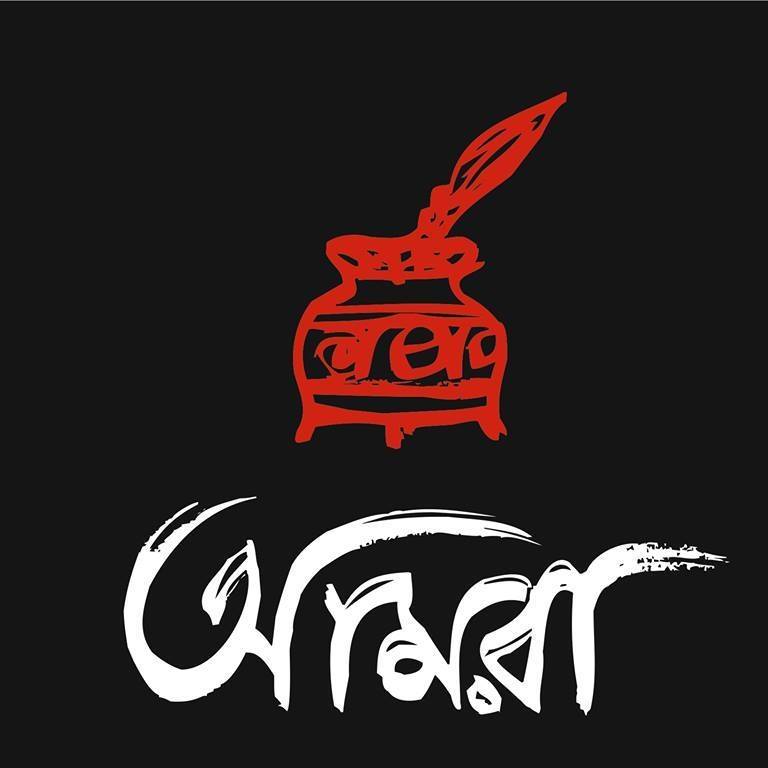
আমরা: এক সচেতন প্রয়াস
AAMRA is an amalgamation of multidisciplinary team of researchers and activists erstwhile worked as an assemblage of movement, research and activism. Popular abbreviation of AAMRA is, An Assemblage of Movement Research and Appraisal.-
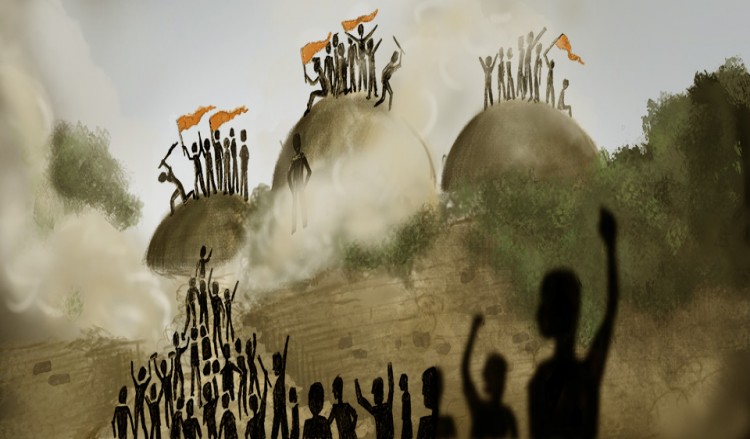
Lord Ram: Where was he born? by Ram Puniyani
Ram Puniyani explores the controversies which are overlooked... -
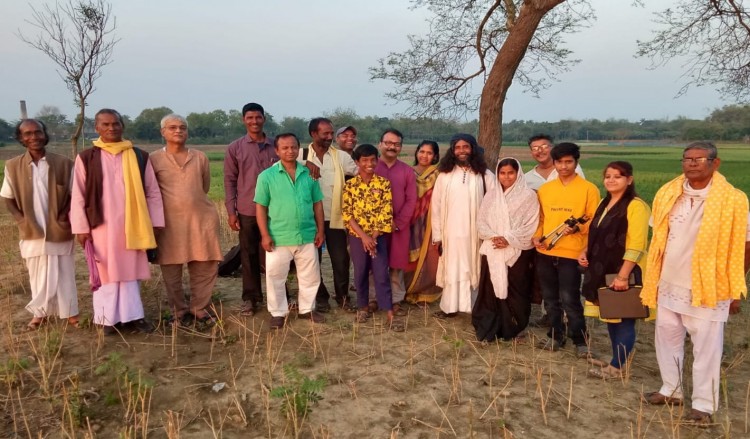
AAMRA Akhra, a Folk cultural Programme against Communalism, 26 February, 2022
AAMRA has a dream, a dream of a peaceful world. On our... -
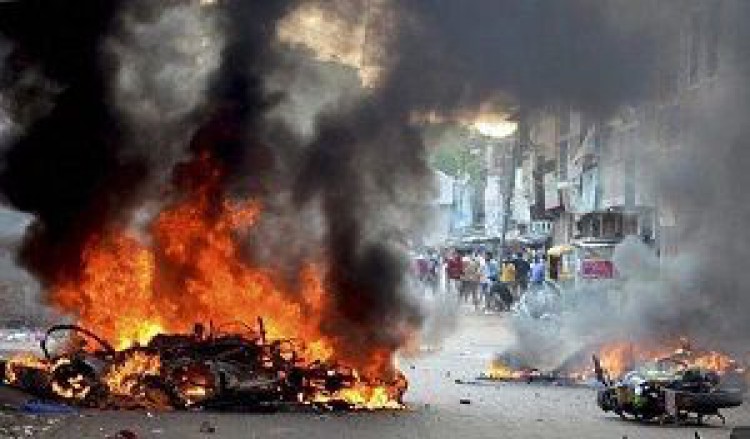
পশ্চিমবঙ্গ : সাম্প্রদায়িক দাঙ্গা, ২০১৬
‘অল্প হিন্দু থেকে বেশি... -
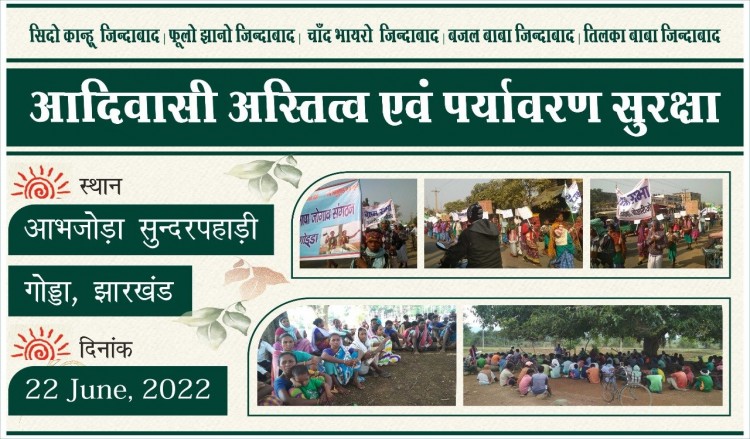
Convention on Tribal Existence and Environmental Protections, Sundarpahari, Godda, Jharkhand, 22 June, 2022
This gathering represented the stirrings of a new Adivasi...
